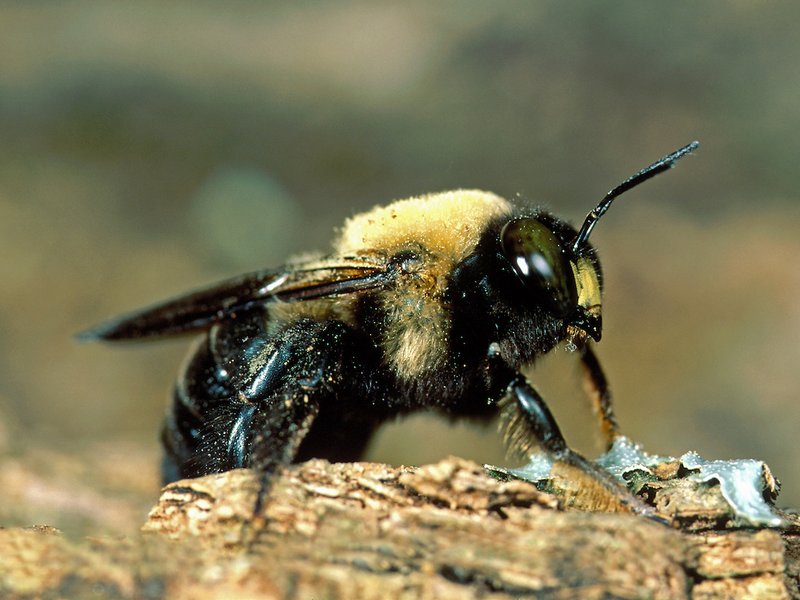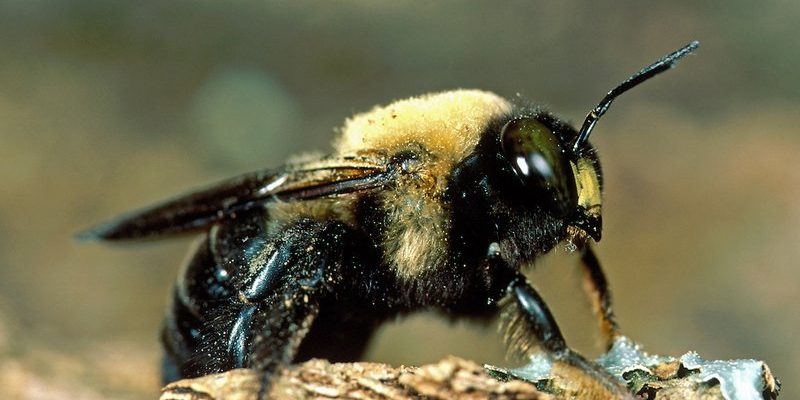
Carpenter bees are unique in that they like to drill into wood to make their nests—hence the name. Unlike honeybees that live in colonies, carpenter bees are mostly solitary. While they might not be as friendly as our honey-making pals, understanding their behavior can ease your worries. So, let’s dive into the buzzing world of carpenter bees and find out just how dangerous they really are.
What Are Carpenter Bees?
Carpenter bees belong to the family Xylocopinae and are often mistaken for bumblebees due to their similar size and appearance. They have a robust body, typically measuring around 1 inch long, and they can be mostly black or have a hint of yellow. What really sets them apart is the shiny, hairless abdomen, unlike the fuzzy bumblebee.
Their behavior is quite fascinating. Male carpenter bees are known for their bold antics, often hovering around areas where humans might be, like porches or gardens. Don’t worry too much; they have no stinger and can’t hurt you. Females do possess a stinger, but they are generally non-aggressive. Here’s the thing: they’d rather fly away than sting unless they feel threatened.
These bees use their powerful jaws to bore into wood, creating tunnels where they lay their eggs. This behavior can cause damage to unpainted or weathered wood structures around your home. So, while they aren’t out to get you, they might be causing trouble for your house.
Are Carpenter Bees Aggressive?
You might be wondering, “Do carpenter bees actually attack?” The answer is a bit nuanced. Male carpenter bees are quite territorial and might dive-bomb you if you get too close to their nesting area, but they lack a stinger. They’re essentially putting on a show to scare you away—imagine a tough guy trying to act intimidating without actually being a threat.
On the other hand, female carpenter bees are more reserved. They will only sting if they feel directly threatened or handled roughly. This means that as long as you don’t provoke them, you’re unlikely to experience a sting. Think of it like this: male carpenter bees are like actors trying to play tough, while the females are the real deal but prefer to keep to themselves.
If you see one buzzing around, try to stay calm and give it space. You can easily enjoy your outdoor time without fear of being stung. Just remember that, like any wildlife, it’s best to respect their territory.
Do Carpenter Bees Cause Any Damage?
While carpenter bees aren’t dangerous to humans in terms of stings, their nesting habits can lead to some significant problems for your home. These bees love to tunnel into unpainted or weathered wood, and over time, their drilling can cause structural issues.
Imagine a beautiful wooden deck or a cozy shed. Those areas may become a prime target for carpenter bees looking for a perfect spot to lay their eggs. As they bore, they create tunnels that can weaken the wood.
To give you an idea of how they can damage property, here are a few places carpenter bees commonly infest:
- Decks and porches
- Sheds and fences
- Wooden furniture left outside
- Roof eaves
If the infestation is left unchecked, it can lead to costly repairs. Keeping your wood structures well maintained, painted, or sealed can help deter these bees.
How to Identify Carpenter Bee Damage
Recognizing carpenter bee damage is essential to taking the right steps to protect your home. One telltale sign is the small, round holes, about the size of a dime, that appear in the wood. If you look closely, you might see fine wood shavings or “frass”—a sign that the bees have been busy boring their tunnels.
Here’s how to spot the signs:
- Small holes: Look for a series of perfectly round holes in wooden surfaces.
- Wood shavings: Check the ground or nearby surfaces for light-colored wood dust.
- Buzzing: Listen for the buzzing sound of the bees, particularly in spring when they’re most active.
If you notice these signs, it might be time to take action.
Preventing Carpenter Bee Infestations
Preventing carpenter bees involves a few proactive strategies that can keep your home safe. Here are some effective tips:
- Paint or stain wood: A fresh coat of paint or stain on outdoor wooden structures makes them less appealing to carpenter bees.
- Seal holes: If you’ve had previous infestations, seal any existing holes with caulk or wood filler.
- Use decoys: Some homeowners have found success using fake wasp nests as decoys since carpenter bees tend to avoid areas where they think other bees are nesting.
These steps can help keep the carpenter bees at bay and protect your wooden structures from their drilling habits.
How to Handle a Carpenter Bee Encounter
So, what should you do if you find yourself face-to-face with a carpenter bee? First and foremost, try to stay calm. Remember that most interactions are harmless, especially if you don’t provoke them. If you want to remove the bee from your space, here’s what you can do:
1. Don’t swat: Instead of trying to swat it away, move slowly and avoid panic.
2. Leave the area: If the bee seems agitated, the best move is to quietly walk away.
3. Close windows: If you’re indoors, close doors and windows to keep them from entering your home.
If you need to remove them from your living space, consider using a vacuum with a hose attachment. Just make sure to release them outside away from your home.
In summary, carpenter bees aren’t dangerous to humans in the way that wasps or hornets can be. While they might seem intimidating and can cause damage to your home, they generally prefer to avoid confrontation. By understanding their behavior and taking preventive measures, you can coexist with these fascinating insects without fear.
If you ever spot one buzzing around your patio, just remember: they’re more interested in finding a place to nest than in bothering you. Embracing this knowledge can help you enjoy your time outdoors with a bit more peace of mind.

